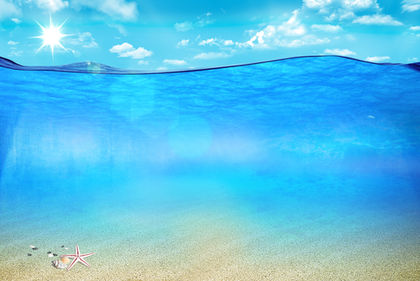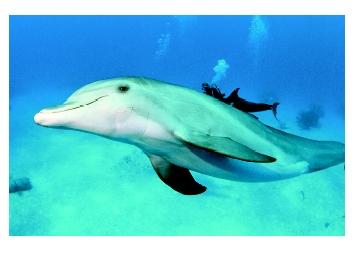Ocean Ecosystems: Open Ocean

The realm of open water, called the pelagic zone, has the greatest volume and vertical range of any life zone. It includes the region above the continental shelf , called the neritic province, and the region beyond, called the oceanic province. Gradations in light, temperature, water chemistry, nutrient content, and pressure result in a diversity of environments that are filled by a large number of species.
Life is found throughout the water column (that is, top to bottom), but mostly in the photic zone, the region where sunlight makes photosynthesis possible. Organisms are also more abundant where there are more nutrients: in the neritic, where nutrients wash off the land, and in upwelling zones, where relatively cold nutrient-rich waters from the deep ocean rise to the surface. Pelagic life is dominated by plankton , mostly tiny organisms that move with water currents. Photosynthesis by phytoplankton is directly or indirectly the primary food source for all marine life. The animals, or zooplankton, that eat them may also be tiny, like krill, or they may be larger, like jellyfish, and able to make small, directed motions.
The active swimmers that inhabit the open ocean are called nekton. While the vast majority of nekton are fish and mammals, they include invertebrates, such as mollusks and crustaceans. The most productive waters in the world are upwelling zones, such as those of the west coast of South America. Here, the abundance of nutrients supports a large population of phytoplankton, which in turn is the foundation of rich fishing grounds. If upwelling stops, as happens off Peru during an El Niño event, the fish population declines; if the fishery has already been weakened by overfishing, it may collapse, as did the Peruvian anchovy fishery in the early 1970s.
The ocean has a moderating effect on world climate because water has a high ability to absorb and store heat. When prevailing winds come off an ocean the climate is milder than in locations with no oceanic influence. This is why annual temperature fluctuations are much smaller in western than in eastern coastal North America. The surface layer of the ocean is a heat reservoir that may maintain temperature anomalies for years, and alter rainfall patterns. For example, increased sea surface temperature results in increased evaporation. This increases rainfall and therefore condensation, which provides the energy to drive an El Niño event.
The enormous productivity of phytoplankton has a large effect on the atmosphere, since these organisms use carbon dioxide (CO 2 ) and release oxygen. Also, CO 2 is highly soluble in seawater and the ocean is a carbon dioxide

SEE ALSO Biogeochemical Cycles ; Bony Fish ; Cartilaginous Fish ; Crustacean ; Global Climate Change ; Mollusk ; Ocean Ecosystems: Hard Bottoms ; Ocean Ecosystems: Soft Bottoms ; Plankton
Dana Desonie
Bibliography
Carson, Rachel L. The Sea Around Us. New York: Oxford University Press, 1955.
Kunzig, Robert. The Restless Sea: Exploring the World Beneath the Waves. New York: W. W. Norton and Company, 1999.
Safina, Carl. Song for the Blue Ocean: Encounters Along the World's Coasts and Beneath the Seas. Toronto, ON: Owl Books, 1999.
Comment about this article, ask questions, or add new information about this topic: